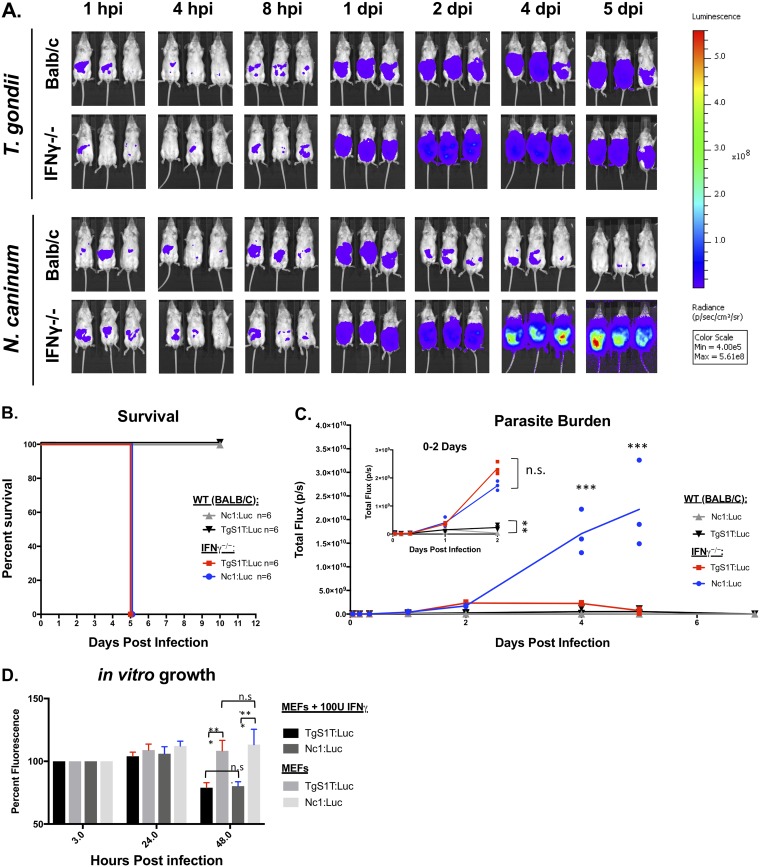FIG 3.
IFN-γ is required for control of N. caninum proliferation during acute infections in BALB/c IFN-γ−/− mice. Six-week-old female interferon gamma knockout (IFN-γ−/−) and BALB/c control mice were infected with 106 TgS1T:Luc or 106 Nc1:Luc tachyzoites i.p. (A) Bioluminescence images showing parasite-derived luciferase signals at selected time points. (B) Combined survival of IFN-γ−/− or BALB/c mice infected with T. gondii or N. caninum (data shown are from two experimental replicates each with n = 3 per parasite/mouse strain). (C) BALB/c background IFN-γ−/− mice (n = 3 per parasite species) or WT BALB/c mice (n = 3 per parasite species) were infected as described above (the experiment was repeated [see Fig. S3A in the supplemental material]). (D) Mouse embryonic fibroblast cells were treated with 100 U of recombinant IFN-γ (R&D) 24 h after being inoculated with 104 tachyzoites of either TgS1T:Luc or Nc1:Luc. Parasite-derived DsRed fluorescence (both strains also express DsRed [see Materials and Methods]) was quantified at 3 and 24 hpi, IFN-γ was then added, and fluorescence was quantified 24 h after the addition of IFN-γ (48 h after inoculation). The first data point was normalized to 100% for display purposes. Statistical analysis was performed using two-way repeated-measures ANOVA (alpha value of 0.05) with Sidak’s multiple-comparison test on the raw (nonnormalized) data. *, P < 0.05; **, P < 0.01; ***, P < 0.001; n.s., not significant.

